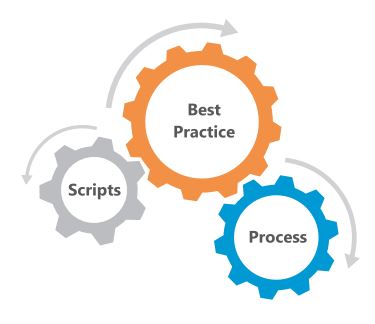| CONTENTS |
BackgroundOur client, the Royal Bank of Scotland, was performing more than 200 manual releases for its mission-critical payment system each year. The number of releases that could be performed had reached crisis point and the application team was struggling to keep up with the delivery requirements. The key issues were:
|
Summary
- From 3 to 1 FTE required per release
- 4 hours to ½ hour average time to release
- High confidence releases with reliable failback options
Delivering for the Client
The solution
Sandhata delivered an end-to-end release framework incorporating automation scripts, release process and best practice. The automation of manual tasks, in addition to integration with the existing process, facilitated fast adoption.
Client Implementation
The result
The new release automation framework revolutionised project delivery, reducing the average time taken for a release from four hours to 30 minutes. Developers and operations staff were released from the manual steps and verification previously required, which meant that less time was wasted in addition to eradicating manual errors.
Visibility into versions of deployed assets meant that components could be replicated and tested quickly with high confidence. Roll-backs were tested as standard for every release, improving application reliability and availability.
The team
Sandhata’s automation experts introduced an end-to-end release automation process and collaborated with the bank’s team to integrate this with the existing application lifecycle. Sandhata’s team was able to use its extensive knowledge and experience of automation to deliver a significant change in a short period of time without compromising quality.
Åsa Burke
Latest posts by Åsa Burke (see all)
- Sandhata in partnership with CA Technologies - 24th October 2017
- 5 steps to rapid DevOps success - 11th August 2017
- DevOps Myths – Debunked! - 22nd June 2017


